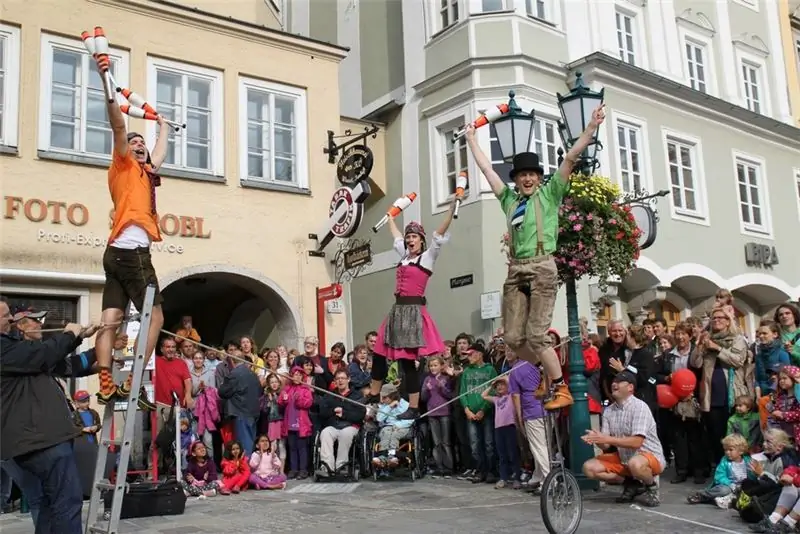
In some countries, residents love carnivals and arrange them for any reason, but decorous Austrians cannot live without balls. But Austrian holidays are not only concerts and gorgeous Viennese balls, they are also many interesting performances.
Saint Martin's Day
Catholics commemorate Saint Martin on November 11. The first mention of the holiday can be found in the annals of 1171. It is based on pagan harvest feasts. The Catholic Church has made some adjustments. This is how Martinghazel appeared.
On this day, the Austrians traditionally serve a goose cooked according to a special recipe. The poultry is accompanied by dumplings, red sauerkraut and roasted chestnuts.
But the celebration is not limited to eating a goose. For the Austrians, this is also an excuse to "go out". Heurigers are especially popular - miniature restaurants serving young wine. On November 11, the day of the new wine harvest is also celebrated in parallel.
St. Martin's Day is celebrated throughout the country, but the inhabitants of the Austrian provinces are especially zealous for this. To this day, the celebration is accompanied by huge bonfires that scare away evil spirits. Children on this night, as in ancient times, continue to walk along the night streets with their lanterns on, singing songs about the glorious deeds of St. Martin. Martingansel traditionally opens the new carnival season.
Mother's Day and Father's Day
The holiday is celebrated on the second Sunday in May and practically does not differ from International Women's Day. Children also give mothers bunches of flowers, homemade cards and gifts, as well as poetic congratulations.
Father's Day falls on the celebration of the Ascension. Children also prepare performances, but a tie becomes a traditional gift. And they give it, regardless of whether they will wear it later or not. Such is the custom!
All Saints' Day
It is celebrated on November 1. In Austria, this day is an official holiday and a non-working day. Austrian believers must go to church. And the next day, November 2, when it is customary in the country to commemorate the dead, residents of the country visit the graves of their relatives and will certainly light candles. The candle light on the grave mound is the main symbol of this holiday.
The famous Halloween is celebrated on the night of November 1st. It is believed that the gloomy symbolism of the holiday was "presented" by the Irish druids, who celebrated the day of their dead ancestors that night. The true origins of Halloween are unknown. In its present form, it came to Europe from America, and the Catholics did not like such a clear distortion of the traditions of their ancestors. However, they put up with this, as well as with the transformation of St. Nicholas into the powder of Santa Claus.






